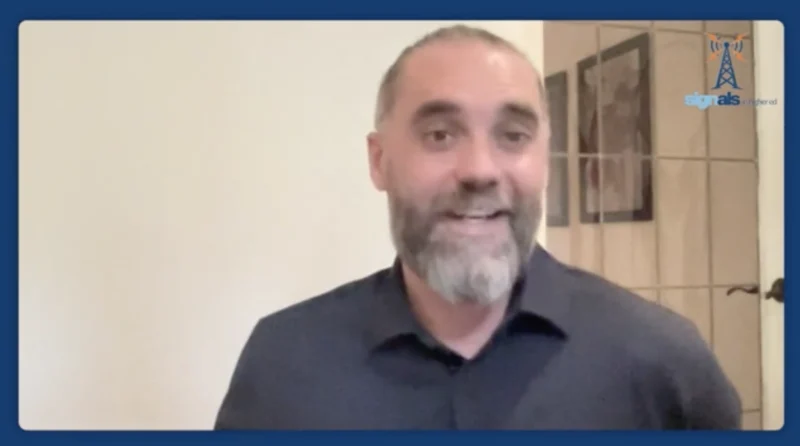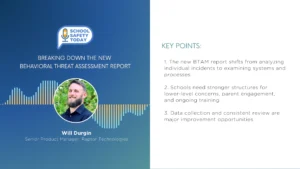The Value of Building Virtual Campus Tours
The COVID-19 pandemic has impacted all aspects of higher education, including the college selection process.
Gone are the days—temporarily—of the tradition of prospective students taking road trips to visit colleges or universities they are considering attending to get a sense of the campus, speak with current students and faculty, tour student housing, and explore the surrounding community. While the pandemic has put a damper on this experience, it has focused admissions staff on another tool in their toolbox: the virtual campus tour.
Virtual campus tours are nothing new. They have developed as a recruitment tool as the technology to create and host them has evolved from simple interactive campus maps to live tours with on-campus guides leading the way. COVID-19 has contributed to their evolution.
“Our traffic tripled in the immediate aftermath of the COVID outbreak,” reported Chris Carson, president and founder of CampusTours in Auburn, ME. “We’re seeing a tremendous increase in interest in virtual tours from prospective students, and correspondingly we’re seeing a dramatic increase in virtual tour development from colleges and universities. Many are rushing out presentations to get them out as quickly as possible. COVID is affecting both student interest in virtual tours and institutional ability to develop them,” he said.
Keene State College in Keene, NH, is one institution that responded quickly when COVID curtailed on-campus visits.
“We did have a virtual tour available prior to the pandemic, but it was more of a self-guided tour where you could click through the virtual map and land at specific pages,” said Peggy Richmond, director of Admissions for Keene State. “The virtual tour guided by a student was created within days of us moving to remote work. Our team only missed one day of information sessions and tours—meaning that is the amount of time it took us to deliver the information session virtually. If you go to our website you will see that we now offer both: a self-guided tour and the guided tour with one of our current students.”
There is no single format for a virtual tour. Carson explained that some simply allow students to wander around campus and get a little bit of information on locations. These tours may have panoramic images and not be very interactive. In other cases, interactivity is important. “They really want to convey a sense of what it’s like to attend the institution and want to control the experience a little more; therefore they’d like to provide a video tour or slideshow tour of the institution,” he said. One of the big challenges for schools in developing these tours is determining what it is they want to convey to visitors.
“We’re seeing a tremendous increase in interest in virtual tours from prospective students, and correspondingly we’re seeing a dramatic increase in virtual tour development from colleges and universities.” – Chris Carson
It generally ranges from 30 days up to about three months to put a virtual tour together, depending on the complexity of the presentation, according to Carson. “Some of them involve custom map artwork of the campus; for that we need to do aerial photography, then we model the campus in 3-D. The institution has the opportunity to comment on anything as we’re modeling it and request changes.” The college or university also has the option of using videos or panoramic images they already have in hand.
Some institutions build and host their own virtual tours, but increasingly they are hosted by specialized software firms on a cluster of servers optimized to deliver the experience world-wide in as fast a method as possible, Carson explained. A visitor will find and click on the virtual tour on the institution’s website and it may appear that it’s coming from the school, but in reality, it is being served by a specialized network of computers optimized for multimedia delivery. More visitors are also using their phones to view the tours, at least initially, so optimizing them for delivery to mobile devices must be taken into consideration.
In developing virtual campus tours to take the place of–rather than supplement–in-person visits during the pandemic, the reasoning might be that longer is better, but Carson recommends that tours not take more than 20 minutes. “We find that students start to defect from the tours after about seven to eight minutes,” he said, “and after about 20 minutes you’ve lost the majority of your visitors. A good 70 to 80 percent are gone before 20 minutes is up.”
Virtual tours also offer the ability to track how many viewers visit, as well as what they look at and for how long. “Schools need to know if certain stops are performing well or underperforming, if students are skipping specific stops, or if they’re leaving specific stops halfway through,” Carson said. The institution can use those statistics for research into what is going on in the tour and potentially make changes to it.
Carson said one of the big challenges for institutions currently developing virtual campus tours during the COVID-19 pandemic is determining what it is they want to convey. One advantage of virtual tours is being able to show the less-tangible features of life on campus, such as the social aspects—students arm in arm, watching a football game, hanging out on the quad—that are not happening today. “Right now, you have students socially distancing, wearing masks, and some institutions say that’s fine, we want to show that, we want to show we are being cognizant and careful about COVID-19,” Carson explained. “Other institutions are saying, ‘I don’t want to show that at all because I’m expecting in two to three years that will be in the rearview mirror and we won’t want to be showing those photos and videos anymore.’”
The Icahn School of Medicine at Mount Sinai in New York City went online with its first virtual tour less than a month ago, according to Matthew J. O’Connell, Ph.D., senior associate dean for Curriculum, Recruitment and Admissions. “We didn’t have it as an option prior to the pandemic,” he said.
“The tour, as it is currently constituted, is tailored somewhat to Ph.D. candidates,” O’Connell explained. “It’s made in modular fashion; with some additions it could be repurposed to other cohorts of students, which would have some things in common but some things that are unique. I believe there are plans to continue to work on the content for different purposes. Like everybody else we got to a point this year when we realized we couldn’t interview candidates in person, so the tour came out of that.”
At Keene State, Richmond also sees expanded uses and a bright future for the virtual tour developed because of COVID-19.
“Following the pandemic, we will continue with the virtual tour for those families who are unable to visit for whatever reason,” she said. “We will expand the content and purpose–that’s what you have to do with all of your projects in Admissions. The self-guided virtual tour had very few takers prior to the pandemic–the increase could be due to the pandemic but is mostly due to the quality of the current experience. We upgraded the self-guided tour and continue to make improvements on the guided tour. Both are an excellent experience and excellent substitute for the in-person tour.”
Follow us on social media for the latest updates in B2B!
Twitter – @MarketScale
Facebook – facebook.com/marketscale
LinkedIn – linkedin.com/company/marketscale








